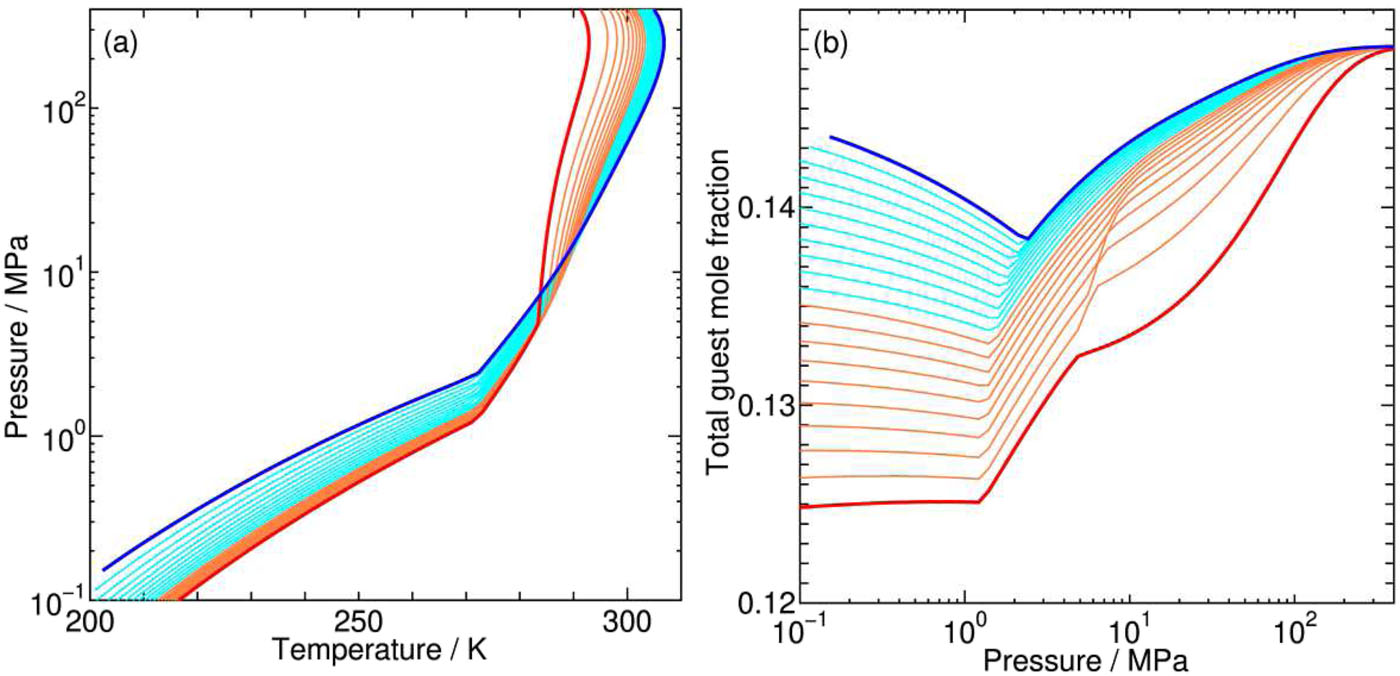Efficiency and energy balance for substitution of CH4 in clathrate hydrates with CO2 under multiple-phase coexisting conditions

Many experimental and theoretical studies on CH4–CO2 hydrates have been performed aiming at the extraction of CH4 as a relatively clean energy resource and concurrent sequestration of CO2. However, vague or insufficient characterization of the environmental conditions prevents us from a comprehensive understanding of even equilibrium properties of CH4–CO2 hydrates for this substitution. We propose possible reaction schemes for the substitution, paying special attention to the coexisting phases, the aqueous and/or the fluid, where CO2 is supplied from and CH4 is transferred to. We address the two schemes for the substitution operating in three-phase and two-phase coexistence. Advantages and efficiencies of extracting CH4 in the individual scheme are estimated from the chemical potentials of all the components in all the phases involved in the substitution on the basis of a statistical mechanical theory developed recently. It is found that although substitution is feasible in the three-phase coexistence, its working window in temperature–pressure space is much narrower compared to the two-phase coexistence condition. Despite that the substitution normally generates only a small amount of heat, a large endothermic substitution is suggested in the medium pressure range, caused by the vaporization of liquid CO2 due to mixing with a small amount of the released CH4. This study provides the first theoretical framework toward the practical use of hydrates replacing CH4 with CO2 and serves as a basis for quantitative planning.
Tanaka, H., Matsumoto, M. & Yagasaki, T. Efficiency and energy balance for substitution of CH4 in clathrate hydrates with CO2 under multiple-phase coexisting conditions. J. Chem. Phys. 159, (2023) https://doi.org/10.1063/5.0179655
